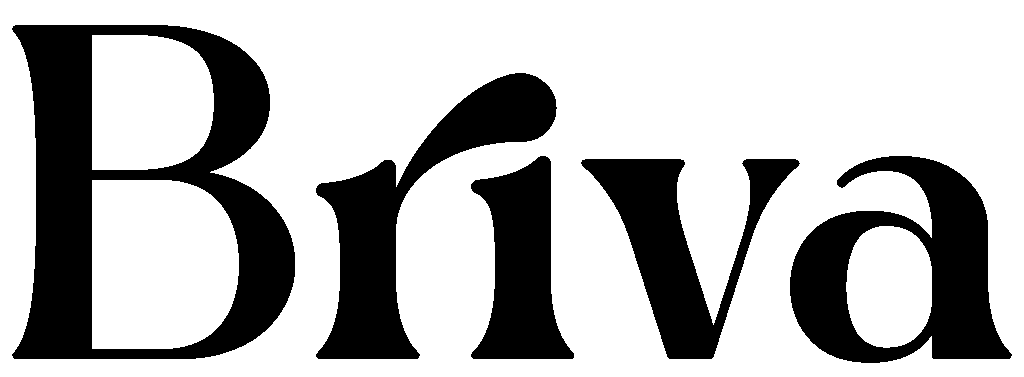Beyond the Pixels
Why High-Res Images are a Print Essential for Your Brownsville Business
You’ve got a fantastic new design for your flyer, brochure, or even a vehicle wrap. It looks stunning on your computer screen, vibrant and sharp. But then it comes back from the printer, and… disaster. The images are blurry, pixelated, or just plain muddy. What went wrong?
The culprit is often a fundamental concept in graphic design and printing: image resolution. At Briva, we understand that a successful print job starts long before the ink hits the paper. It begins with understanding the core elements of your visual assets, especially image quality.
Pixels, Dots, and Clarity: Understanding Resolution
When we talk about image resolution, we’re primarily looking at two key terms:
- DPI (Dots Per Inch): This is crucial for print. DPI refers to the number of individual ink dots that a printer can place within one linear inch. The higher the DPI, the more detail the printer can reproduce, resulting in a sharper, clearer image. For most professional print jobs, 300 DPI is the gold standard. Anything less will likely appear fuzzy or pixelated when printed.
- PPI (Pixels Per Inch): This primarily refers to screen resolution. PPI describes the density of pixels on a digital display. While related to DPI, it’s important to remember that a high PPI on your screen doesn’t automatically translate to a high DPI suitable for print. Your phone or computer screen might look great at 72 PPI, but print those same images, and you’ll quickly see the difference.
Vector vs. Raster: The Building Blocks of Your Brand
Beyond DPI, understanding the type of image file you’re using is critical:
- Raster Images (Pixel-Based): These are images made up of a grid of tiny colored squares (pixels). Photos, JPEGs, PNGs, and GIFs are common raster formats. When you enlarge a raster image beyond its original resolution, you’re essentially stretching those pixels, causing them to become visible and the image to appear “pixelated” or blurry. This is where low-resolution problems often arise in print.
- Think of it like: A mosaic. If you try to make the mosaic bigger without adding more tiles, the existing tiles just get larger and the image becomes blocky.
- Vector Images (Formula-Based): Unlike raster images, vector graphics are made up of mathematical equations that define points, lines, and curves. Common vector formats include AI (Adobe Illustrator), EPS, and SVG. The incredible advantage of vector files is that they are infinitely scalable without any loss of quality. You can resize a vector logo from a business card to a billboard, and it will remain perfectly crisp.
- Think of it like: A mathematical blueprint. The computer can redraw the image perfectly at any size, because it’s following instructions, not just stretching pixels.
For logos, illustrations, and sharp text that needs to be resized frequently, vector files are always the preferred choice for print.
The Hidden Cost of Low-Resolution Images: Hurting Your Brand’s Professionalism
Using low-resolution images in your printed marketing materials can have several negative impacts on your Brownsville, TX small business:
- First Impressions Matter: A pixelated brochure or a blurry sign instantly communicates a lack of attention to detail and professionalism. Potential customers might unconsciously associate this quality with your products or services.
- Wasted Investment: You’ve invested time and money into design and printing. Don’t let poor image quality undermine that investment.
- Brand Inconsistency: If your logo or key visuals look sharp online but fuzzy in print, it creates a disjointed and unprofessional brand image.
- Reduced Readability: Blurry text or unclear images make your message harder to grasp, leading to lost interest.
How to Ensure Your Images Are Print-Ready
Before you send your next design to the printer, keep these tips in mind:
- Start with High-Quality Sources: Whenever possible, use original photos from a professional photographer or purchase stock photos that are specifically marked as “high-resolution” or “print-ready.”
- Check File Properties: In most operating systems, you can right-click an image file (or check its properties in a photo editor) to see its dimensions in pixels and often its PPI/DPI.
- Know Your Vector Files: Always request your logo and any custom illustrations in vector formats (like .AI, .EPS, or .SVG) from your designer.
- Don’t “Upscale” Raster Images: Attempting to artificially increase the resolution of a low-res image in software usually results in a larger, but still blurry, file. It can’t magically add detail that isn’t there.
- When in Doubt, Ask Your Printer/Designer: A reputable printing and design service like Briva will always review your files and advise you if your images aren’t suitable for your desired print quality.
Briva: Your Partner for Print Perfection in Brownsville and Beyond
Ensuring your brand looks its absolute best in print is our passion at Briva. Our services range from stunning book illustrations and precise logo design to impactful brochures, banners, and eye-catching vehicle wraps, we combine creative expertise with technical printing knowledge. We’ll make sure every pixel (or vector path!) contributes to a sharp, professional, and memorable impression.
